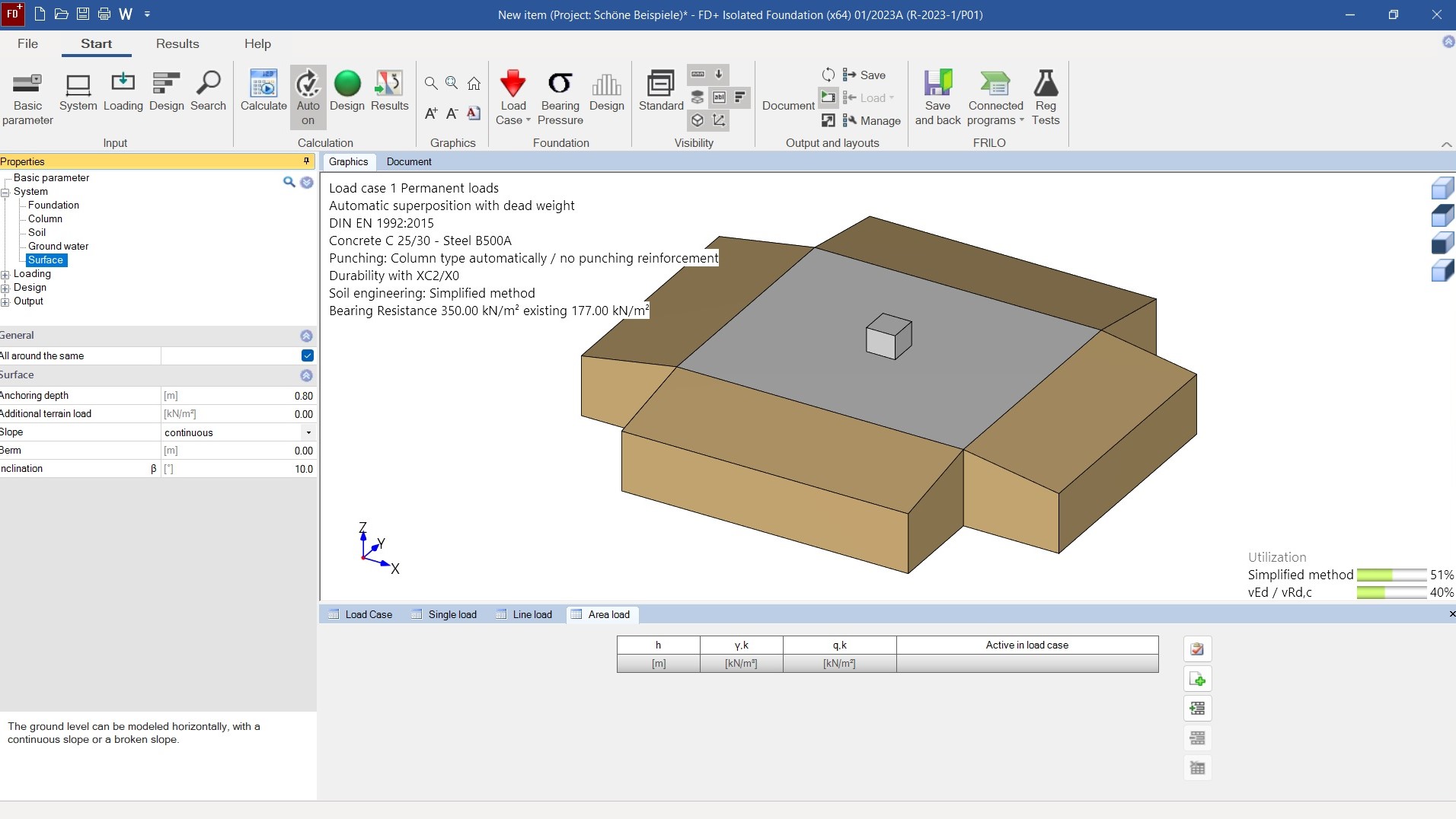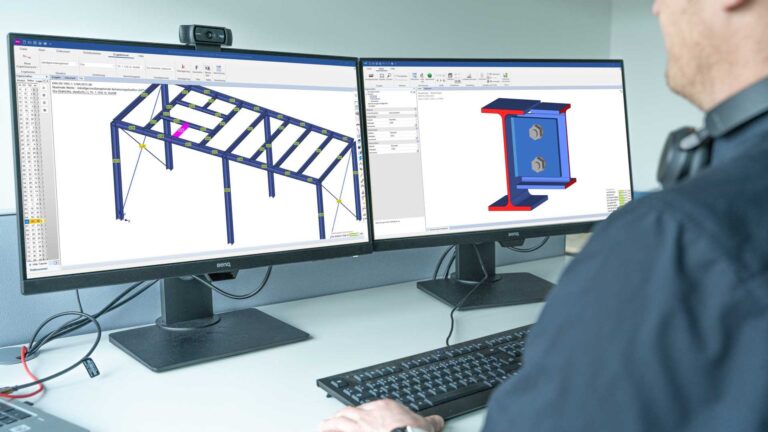Raising foundation design to a new level

The new FD+ PRO module is an add-on, which with the purchase of an additional licence significantly extends the scope of foundation design for the FD+, FDS+, FDB+ and GBR+ programs. For various limit states, users can now access special foundation verifications and verification techniques as well as additional load concepts, geometry definitions and result representations.
With the help of the add-on module, the ground failure resistance can be calculated with consideration of punching through a soft layer (DIN 4017 Annex B). However, the verification “punching through a soft layer” is only applicable if a corresponding soil stratification has been defined below the foundation base. If earthquake loads are defined and the foundation failure check is activated, a seismic foundation failure check can also be carried out for actions from earthquakes (DIN EN 1998-5 Annex F). In this case, the stability against seismically induced ground failure of a flat-founded strip foundation on the surface of a homogeneous soil is verified.
Inclined foundation joint and earth pressure application
Furthermore, an inclined foundation surface can be defined. In this case, the sliding verification can be carried out at the “equivalent shear joint”, taking earth resistances into account. The inclination of the invert joint can be specified as an angle in [degrees] or as a height change in [metres] for one of the two main axes. With regard to the actions, users can take into account different earth pressure approaches in all verifications at all end faces depending on the direction of movement. In connection with this, any ground surface can also be modelled at each of the four foundation sides via the system properties. This can then be used to determine side-dependent earth pressure curves and foundation failure resistances. Earth pressures are activated in the design options under the heading “Earth pressure”.
User-defined base pressure resistances
Based on the exact verifications in the ultimate limit state (sliding, bearing capacity) and the settlement verification in the serviceability limit state, user-defined tables of permissible base resistances can be derived as a function of effective foundation width and embedment depth. This is useful for the generation of geotechnical reports or design tables, for example. The options for generating user-defined base pressure resistance tables can be found in the system input under the heading “Soil” (determination of σRd from own table). With regard to the evaluation of results, internal forces, bottom stress and settlement curves can be output graphically along the two main axes.




